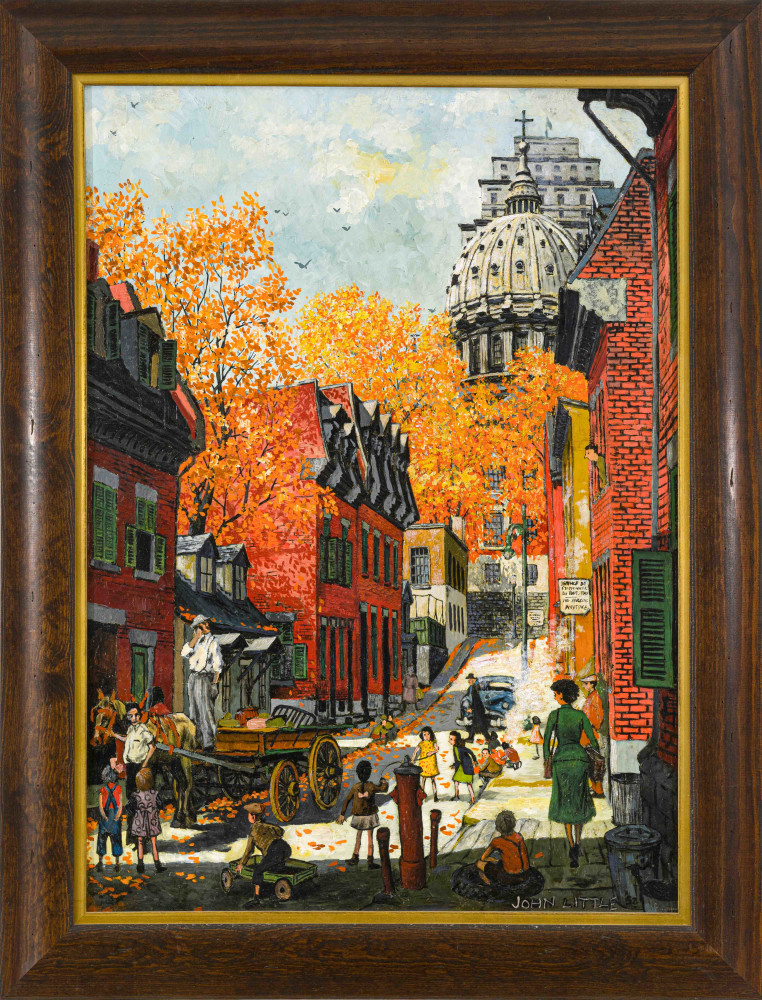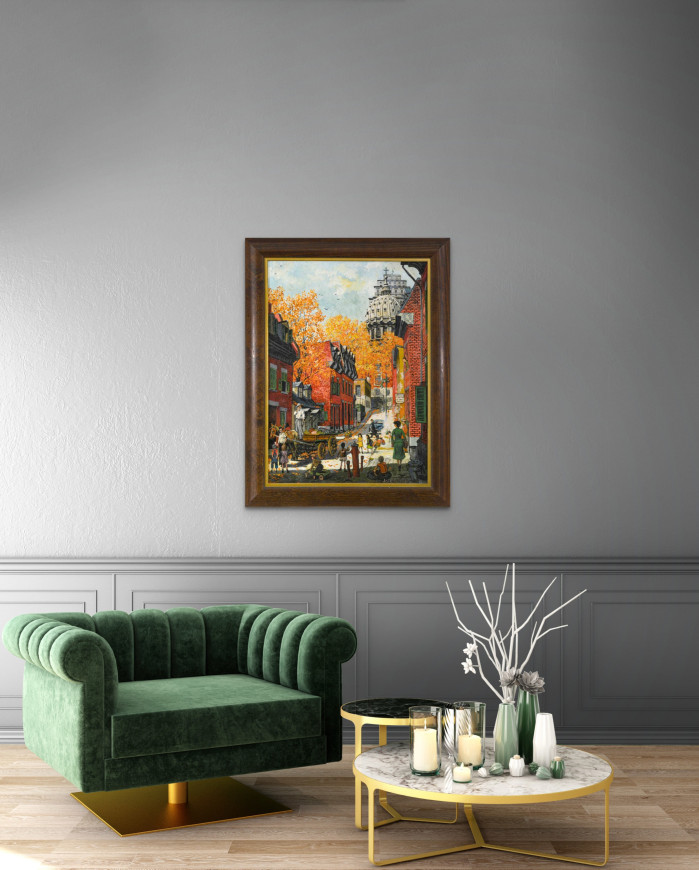72.5 x 52.5 cm
Inscriptions
signed and dated, ‘JOHN LITTLE 52’ (lower right)Provenance
Mr. Clint Orrick
Private collection, Senneville, Quebec
Looking up Ste Cecile Street is an early and colorful rendition of the theme of city life that inspired John Little for his ensuing career spanning more than 50 years. The composition afforded by looking up St Cecile Street attracted the interest of Kathleen Morris and Frederick Taylor. For John Little the appeal is the essence and life of the downtown core, what today is popularly termed “the inner city”. The dynamism, animation, and complexity of the “inner city” including its inhabitants, and built heritage in its multitude of forms and styles is of intrigue to the artist.
Little’s view is looking up Sainte-Cécile Street from Saint Antoine toward de la Gauchetière, flanked with old houses, a more modern low rise apartment, “inner city kids” at play, laborers at work making deliveries, to the right, a rather formally dressed and well coiffed lady walking up St Cécile where a “gentleman”, a businessman of the day appropriately clad in an overcoat and hat crossing, and at the top of the street, Mary Queen of the World crowned by the Sun Life Building.
Little had returned from NYC in 1948 and was a young aspiring artist. Little’s father was an architect of recognition and imbued John with an awareness and appreciation of architecture. From his earliest days as an artist Little had taken a keen and critical interest in development projects underway during the post WW ll period of “urban renewal”. The transformation functionally eradicated, that is demolished, countless homes and buildings in the city centre, forcing citizens out of their homes, to make way for a wholesale development of office buildings, paralleled with an equally aggressive development of suburbs and an infrastructure of highways to take people to and from the downtown where they worked 9 - 5. Little’s work often reflected his desire to preserve the city in the only way that he could, to paint it. To avoid being a people without a past, with the astute eye of the artist and in his individual style, Little preserved the streets and their inhabitants before major projects eradicated them forever.

















